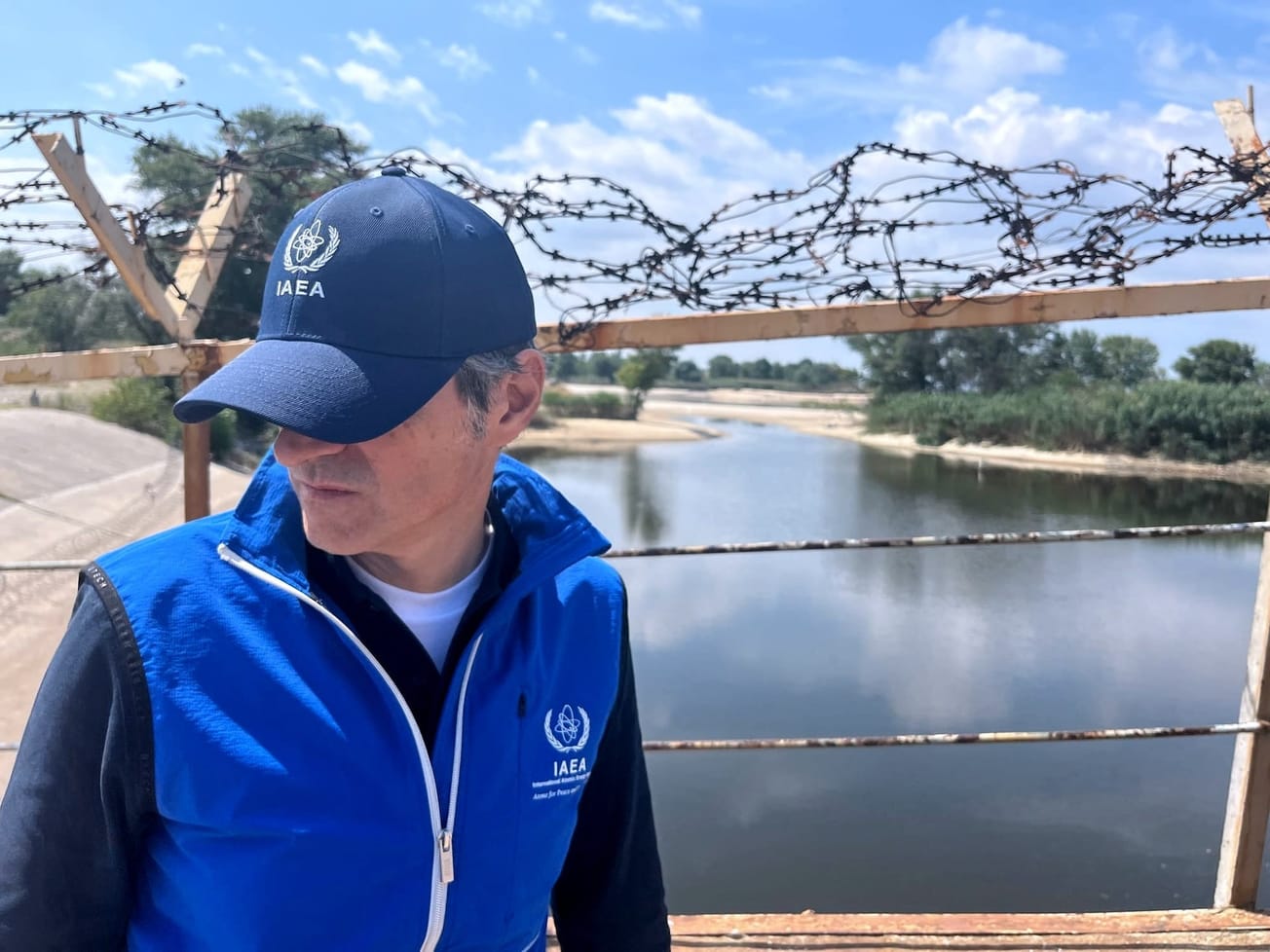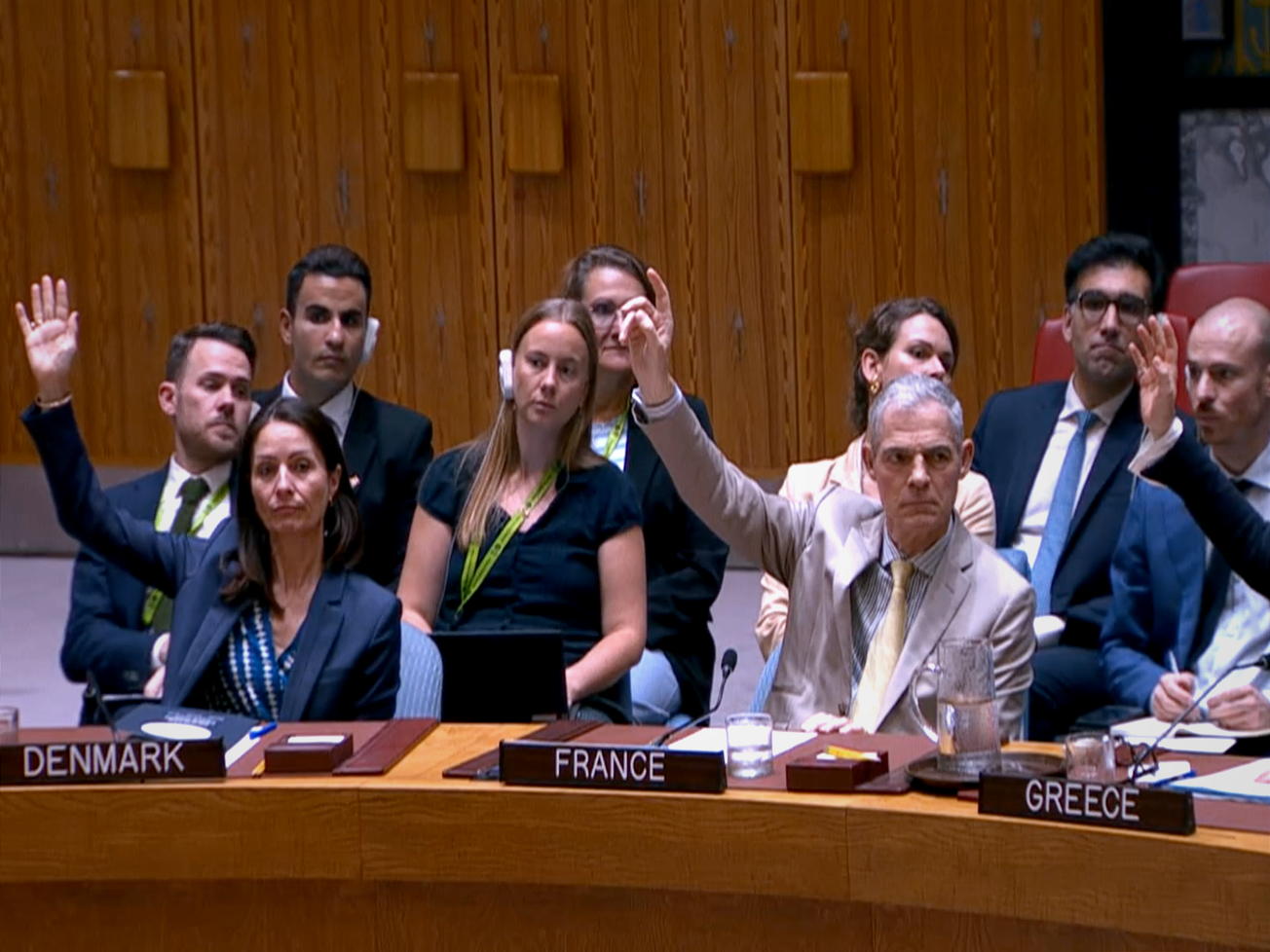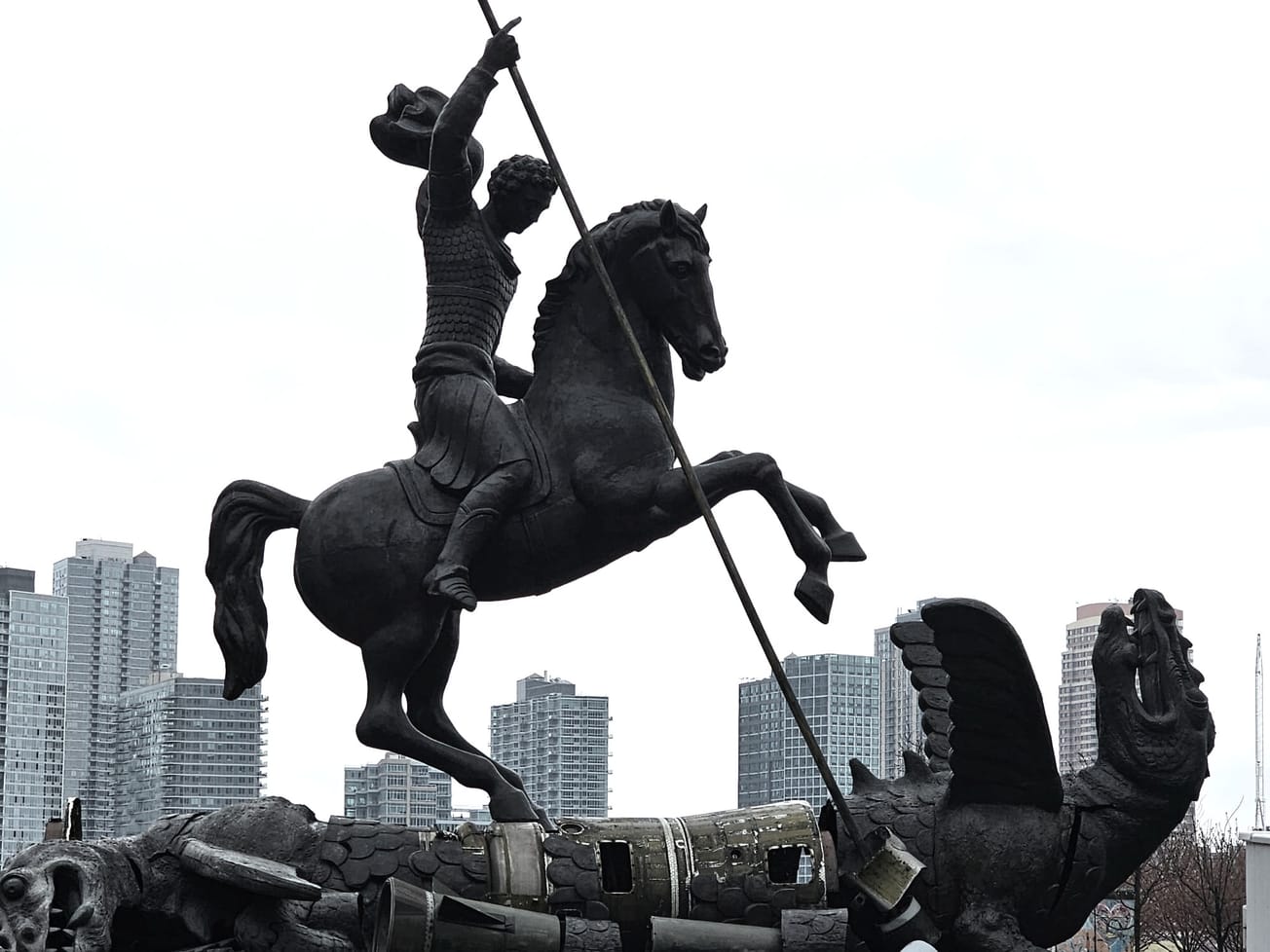The U.N. atomic watchdog agency says Ukraine's Russian-occupied Zaporizhzhia Nuclear Power Plant faces increasing danger after a drone strike hit the road around its perimeter and near its last power line.
What's new: The International Atomic Energy Agency says an explosive carried by a drone detonated on Saturday just outside of a protected area for the plant, which is Europe's largest nuclear power facility. It hit close to the cooling water sprinkler ponds and only about 100 meters from the Dniprovska power line, the only remaining 750 kilovolt (kV) line that provides a power supply for the plant. The water and electricity are needed to prevent catastrophe by cooling the shutdown reactors and spent fuel.









